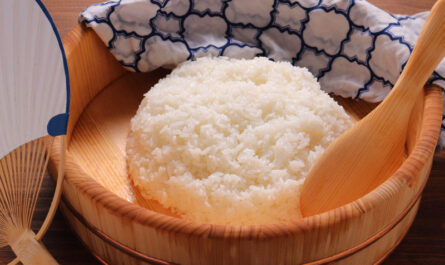When it comes to making the perfect sushi, the choice of rice can make a significant difference. Sushi rice and medium grain rice are two popular options, each with its unique characteristics and uses. In this article, we will delve into the differences between these two types of rice and explore their best uses in various culinary applications.

Understanding Sushi Rice
Sushi rice, also known as shari or sumeshi, is a short-grain rice that is specifically used for making sushi. Its unique texture and flavor are achieved through a special preparation process that involves seasoning the rice with vinegar, sugar, and salt. This seasoning not only enhances the flavor but also gives the rice a slightly sticky texture, which is ideal for holding sushi rolls together.
Characteristics of Sushi Rice
The grains of sushi rice are short and plump, which allows them to absorb moisture effectively. This absorption is vital in achieving the desired stickiness for sushi making. Additionally, sushi rice has a slightly sweet taste, thanks to the vinegar mixture used in its preparation.
Exploring Medium Grain Rice
Unlike sushi rice, medium grain rice is not exclusively used for sushi. It is versatile and can be used in a variety of dishes, including risottos, paellas, and even some desserts. Medium grain rice has a size that falls between short and long grain rice, making it suitable for different culinary needs.
Characteristics of Medium Grain Rice
Medium grain rice has a slightly chewy texture when cooked, and it tends to be less sticky compared to sushi rice. This texture makes it ideal for dishes where a more distinct grain separation is desired. The flavor of medium grain rice is mild, allowing it to complement a wide range of ingredients.
Comparing Sushi Rice and Medium Grain Rice
One of the key differences between sushi rice and medium grain rice is their texture. While sushi rice is sticky and ideal for sushi rolls, medium grain rice has a more distinct grain separation, making it suitable for dishes like risotto. Additionally, the seasoning used in sushi rice adds a unique flavor that is not present in medium grain rice.
Uses in Cooking
Both types of rice have their specific uses in cooking. Sushi rice is essential for making sushi and other Japanese dishes, such as onigiri (rice balls) and chirashi (scattered sushi). On the other hand, medium grain rice can be used in a variety of international cuisines, including Italian, Spanish, and American dishes.
Cooking Techniques
The cooking techniques for sushi rice and medium grain rice also differ. For sushi rice, rinsing and soaking the rice before cooking is crucial to remove excess starch and achieve the desired texture. After cooking, the rice is seasoned with a mixture of vinegar, sugar, and salt to enhance its flavor. For medium grain rice, the cooking process may vary depending on the dish, but it generally involves simmering the rice in water or broth until it reaches the desired consistency.
Recipes to Try
Conclusion
In conclusion, the choice between sushi rice and medium grain rice ultimately depends on the dish you are preparing. Both types of rice have their unique characteristics and uses, making them essential ingredients in different culinary traditions. Whether you’re making sushi or exploring international cuisines, understanding the differences between these two types of rice will help you achieve the best results in your cooking endeavors.

FAQs
What is the main difference between sushi rice and medium grain rice?
The main difference lies in their texture and uses. Sushi rice is sticky and seasoned, making it ideal for sushi, while medium grain rice has a more distinct grain separation, suitable for dishes like risotto and paella.
Can I use medium grain rice for sushi?
While it is possible to use medium grain rice for sushi, it may not achieve the same level of stickiness and flavor as traditional sushi rice. For authentic sushi, it is recommended to use sushi rice.
Where can I learn more about different rice varieties?
For more information on rice varieties, you can visit Culinary Pro’s guide on rice varieties.
This article contains affiliate links. We may earn a commission at no extra cost to you.




